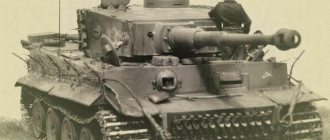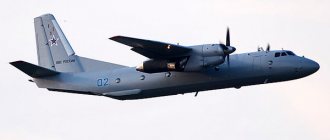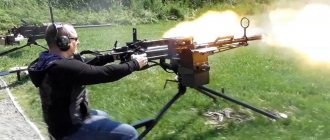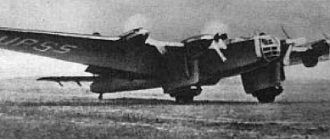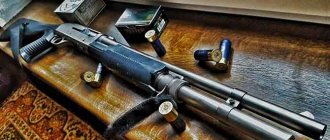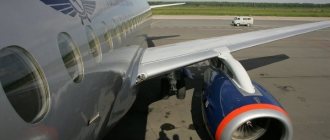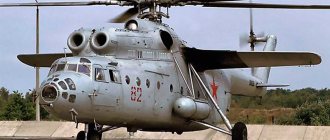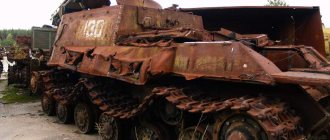The calling card of the Nikolai Kamov Design Bureau was (and remains) coaxial aircraft. The structural complexity of such a design is compensated by the small dimensions of the aircraft and high maneuverability. In many ways, it was these qualities that contributed to the fact that Kamov helicopters firmly “settled” in naval aviation. Mainly in the military.
One of the design bureau’s most famous developments was the Ka-50 “Black Shark.” Unfortunately, it did not gain much popularity. But the most successful development of that period, which allowed the plant to survive in difficult times, was probably the multi-purpose Ka-27 helicopter and its civilian version, the Ka-32.
History of creation
In the 60s, the design bureau of Nikolai Kamov developed and launched into production the successful Ka-25 helicopter. However, the scope of application of this machine remained quite limited. “Twenty-fifth” was actively used in the navy, but had practically no modifications for the national economy.
But the successor to the Ka-25, designated Ka-27, was originally conceived as a universal helicopter for solving a wide range of tasks. Its basic modification remained the anti-submarine version, but a draft national economic version was also prepared.
The first flight of the prototype (common to all major modifications of the platform) occurred at the end of 1973.
In 1980, the production model of the Ka-32 flew for the first time, and in 1981, the new machine was demonstrated to the general public for the first time.
Design
The Ka-32 multi-purpose transport helicopter is a civilian modification of the Ka-27 anti-submarine helicopter, and in design it is almost no different from it. The fuselage is an all-metal semi-monocoque of beam-stringer construction, consisting of a cockpit, cargo compartment, tail section and engine nacelle.
The pilot's cabin is 2-seater, with sliding doors on the sides. Inside the cargo compartment, folding seats are installed along the sides - there are 16 of them in total. The sliding compartment door is located on the left side, closer to the tail. The tail section itself serves as a compartment with equipment.
The power plant of the “thirty-second” is 2 TV3-117VMA gas turbine engines. This is a high-altitude modification of the famous engine, developed back in the 80s for the Ka-50 attack helicopter. Engine control is automatic; in case of automatic failure, auxiliary control is used - manual.
Torque is transmitted to the screws by a planetary 2-stage gearbox, equipped with its own cooling system.
The engine nacelle also contains the AI-9 auxiliary power unit - a small gas turbine that powers the air starter that starts the engines.
The three-bladed propellers are folding, their blades are fiberglass, and the plastic is reinforced with carbon fiber. The screw bushings, made of steel and titanium, are equipped with vibration damping devices, which reduces vibration levels. The tail of the Ka-32 consists of a stabilizer and two keel washers with rudders and slats.
Fuel tanks are mainly located under the belly, but 2 are located in containers along the sides of the fuselage. The Ka-32 landing gear is non-retractable, with 4 legs. In case of emergency splashdown, inflatable balloons can be suspended from the sides, providing the helicopter with some buoyancy. The Ka-32 flight equipment not only provides automatic stabilization, but even allows you to perform an automatic landing approach.
Design features of the Ka-32 helicopter
The helicopter was created according to the coaxial design traditional for all machines of the Kamov family. The commitment of the Kamov Design Bureau team to this scheme is explained by the corporate style that distinguishes all machines with the Ka logo. These machines cannot be confused with any other helicopter.
In addition to the psychological and moral motives that guide design bureau specialists, it should be recognized that coaxial rotors have a number of advantages over the usual classical design. The absence of a tail rotor makes it possible to significantly reduce the dimensions of the machine and reduces the technological richness of the control system.
In Kamov's helicopters, coaxial propellers used the engine power at full power, while in classic helicopters up to 15-20% of the power of the propulsion system is used to operate the tail rotor. Kamov helicopters have no restrictions on angular speed, which determines the ability of the machine to hover vertically. The counter-rotation of the main rotors provides the helicopter with the necessary stability in flight and good maneuverability. This has already been appreciated by military sailors who have been operating Kamov machines on naval vessels for many years. Helicopters are perfect for mooring on the deck of a ship, which cannot be said about classic rotorcraft.
Long-term hovering of a helicopter with coaxial rotors makes it possible to deliver cargo on an external sling with high precision. This quality is indispensable when performing installation and construction work, when performing search and rescue operations and during the evacuation of the wounded from hard-to-reach areas. Despite the complexity of the propulsion system, the design is reliable and has fairly high maintainability.
The coaxial design of the rotors, small and compact dimensions allow the use of such machines in difficult weather conditions, at any time of the day. A machine that can hover in the air is very convenient for takeoff and landing in limited space. In addition, the Ka-32 incorporated many design features of military vehicles. For easy storage of the aircraft in the hangar, folding rotors are installed on it, reducing the volume of the rotorcraft by 5 times. From the military version, the "thirty-second" received a survivability system. Thanks to the installation of balloons, the helicopter remained buoyant for some time during an emergency landing on water. The Ka-32 had duplication of the main control and power supply systems.
The fuselage body has a semi-monk design. The airframe of the vehicle has a compact configuration, which ends with two tail stabilizers. The front part of the fuselage is occupied by a two-seat pilot's cabin. The rest of the fuselage is occupied by the passenger and cargo compartment, in which seating for 18 passengers is installed along the sides. We can say that transporting passengers on board the Ka-32 is far from the comfortable conditions of a passenger airliner, but the helicopter was created for completely different purposes. Long flights were not envisaged during the design of the machine, so comfort was sacrificed to the technical equipment of the machine. A rescue team with all the necessary equipment or a team of doctors with their sanitary and medical belongings could be accommodated on board the aircraft. The interior space of the rotorcraft cabin has a volume sufficient to transport cargo or cargo with a total weight of up to 5 tons.
On an external sling, the helicopter can carry up to 6 tons of cargo. Moreover, the lifting mechanism of the external suspension is equipped with a weighing device. Those. in other words, the machine can lift into the air a weight equal to its own take-off weight.
All these unique qualities would not be so if the helicopter did not have such engines. Two TV3-117 turboshaft engines with a total power of 4400 l/s. have enormous lifting force. The helicopter is capable of flying at a speed of 200-230 km/h at a range of up to 800 km. The practical ceiling reaches 5000 meters.
The vehicle lands on four fixed landing gear struts, two nose and two main.
A sophisticated navigation and flight control system is installed on board the helicopter, which consists of an autopilot, a radio altimeter, and a drift meter. The complex includes an automatic flight control device, thanks to which the aircraft is stabilized in flight and an automatic landing approach is performed. The surveillance radar provides visibility to the vehicle in bad weather conditions and at night. In the first modifications, most of the on-board electronics were analog. New digital navigation and flight systems began to be installed on later vehicles.
Modifications
Historically, the first modifications of the Ka-32 helicopter were the Ka-32S and Ka-32T. The first option was intended for servicing ships (usually in arctic conditions) and oil rigs. The Octopus navigation radar, rescue and sanitary equipment were installed on it. The Ka-32T is a transport, “simplified” version, devoid of radar and special equipment. On its basis, the Ka-32K “flying crane” was built, with an additional operator’s cabin and a new fly-by-wire control system.
Unfortunately, things didn’t go further than the prototype.
The modernized Ka-32 received the index “A”. In order for the aircraft to meet international requirements, it had to improve its instrumentation. Subsequently, the Ka-32A became the basic modification. On its basis, the Ka-32A1 firefighting helicopter was created. The Ka-32A2 variant should have been of interest to law enforcement agencies and used, including for the landing of special forces. But only 1 copy was built, and even that was later converted into a regular transport.
One of the last export modifications of the "thirty-second" was the Ka-32A11BC. It was distinguished not only by modernized instrumentation, but also by an increased service life of its components. Since 2011, this option has become the only base model. The number of unrealized projects based on the Ka-32 included a passenger helicopter with an enlarged fuselage, which contained a comfortable passenger cabin and a vehicle with a payload capacity increased to 7 tons.
Board card Kamov Ka-32A11BC Board number: TC-HLF
| operator: | Kaan Air ( tr ) from October 2022 (3 years 3 months) |
| in operation: | from 2022 (5 years) |
| KB: | Kamov |
| type: | Ka-27/28/29/31/32 (registry) |
| aircraft purpose: | envelope. cargo-passenger |
| manufacturer: | KumAPP |
| factory number: | 5233242610015 |
| serial number: | 100-15 |
| first flight: | 2017 (5 years) |
| Date of issue: | 2017 (5 years) |
Comments
| ESLG-028 dated December 27, 2017, China |
| date | from | V |
| TCH-LE | October 6, 2022 | |
| TCH-LE | June 14, 2022 | |
| TCH-LE | April 30, 2022 | |
| TCH-LE | April 14, 2022 |
show all flights
seen on air: October 6, 2022 at 07:28 ()
Additionally · add clarification on the board card · all comments to the photos of this card00 Board history
| from the date of: | modification: | onboard: | operator: | state: | note: |
| 2017 | Ka-32A11BC | IN-???? | unknown airline | flew | China |
| 2018.10 | Ka-32A11BC | TC-HLF | Kaan Air ( tr ) | flew |
Photos from the archive in chronological order Photos from the archive
| № 248267 | (0/0) 652 views |
| Type: Ka-32A11BC Airborne: TC-HLF No.: | filming location on the map Krasnodar - Pashkovsky (KRR/URKK) AOPA | Krasnodar region Russia Alexander Lebedev (c) April 1, 2019 |
thanked: Sergey, Alexander Stukalin, Vadim874, Andrey, bender, Alan Shanaev, Alexey Khromov, Andrey Vechernin, Valentin Kozlov, Dmitry Ryazanov - AviaPressPhoto, Alexey Karpulev, Asker Askerov, Anastasia Nazarova, Alexey Chizhov, Veniamin Ignatovich, The Old Man from the Bathhouse
- 652
- 18
- 0
Alexander Lebedev
| Ka-32A11BC TC-HLF Kaan Air | April 1, 2022 Krasnodar - Pashkovsky board card |
| № 247268 | (0/0) 599 views |
| Type: Ka-32A11BC Airborne: TC-HLF No.: | Krasnodar — Pashkovsky (KRR/URKK) AOPA | Krasnodar region Russia Ruslan Denisov (c) April 1, 2019 |
Kaan Air
was thanked by: Sergey, Alexander Stukalin, Mikhail Lisovsky, Vadim874, Andrey, Igor Dvurekov, Igor Korolev, nav-nav, Taras Bazhansky, Ivan Krpan, Yuri Tam, Andrey Vechernin, Valentin Kozlov, Dmitry Ryazanov - AviaPressPhoto, Max S, Asker Askerov , Evgeny Lebedev, Anastasia Nazarova, Vladislav Belov, Sneeke, The Old Man from the Bathhouse ( 21
)
- 599
- 21
- 0
Ruslan Denisov
| Ka-32A11BC TC-HLF Kaan Air | April 1, 2022 Krasnodar - Pashkovsky board card |
Comments on the card:
No comments.
Log in to the site to add a comment. Statistics for this card Entry added: 2017-06-19 01:04 Version: 12
(from 2020-09-18 13:29) views: 1759, today: 1
Notes on the registry Registries russianplanes.net
are compiled on the basis of media reports, analysis of photographs and schedules, data permitted for publication from operators, aircraft factories, design bureaus, from the Economic Archive, as well as on the basis of additions sent by site visitors, , , .
The project administration is not responsible for possible inaccuracies and irrelevance of the information provided.
Exploitation
The use of Ka-32 helicopters began long before their launch into production.
In 1978, an experimental helicopter proved its high performance qualities by participating in the escort of the icebreaker “Sibir” along the Northern Sea Route.
Then, in the period from 1983 to 1985, several world records were set on the “thirty-second” - in rate of climb, flight altitude and load lifting height. Moreover, all records were set by the female crew.
In 1986, shortly after the start of mass production of the "thirty-second" and its international debut at the Le Bourget air show, the helicopter came in handy in eliminating the consequences of the Chernobyl disaster. The high maneuverability of the Ka-32 when flying with a suspended load made it possible to use it to lower sensors into the exhaust pipe of a power unit.
Subsequently, after the collapse of the USSR, the “thirty-second” continued to be actively used in Russia and the CIS countries. And not only: Ka-32 firefighters fly in Spain and Portugal, Kamov Design Bureau vehicles were actively purchased by Canada and Switzerland, and in South Korea the “thirty-second” was even put into service.
Flight performance
There are not many coaxial helicopters in the world, and comparing the Ka-32 with single-rotor aircraft does not seem to be very correct. But you can compare its parameters with the performance characteristics of the American S-70 helicopter, the civilian version of the famous Black Hawk. This vehicle is used, among other things, as a firefighting and marine vehicle.
| Ka-32 | Sikorsky S-70 | |
| Main rotor diameter, m | 15,9 | 14,1 |
| Length, m | 11,3 | 17,1 |
| Take-off weight, t | 11 | 7 |
| Maximum speed, km/h | 260 | 361 |
| Load capacity, t | 5 | 4 |
The advantages of the coaxial arrangement are obvious - the Ka-32 is smaller in size (especially with folding propellers), and its payload capacity is higher. The worst speed characteristics for cars of this class are not decisive.
Development of the Ka-32 began back in the 60s, but it was only possible to launch it into production in the mid-80s. Nevertheless, it still remains a popular car, superior to its competitors in a number of characteristics.
If we remember that the “thirty-second” itself is one of many variants of the Ka-27 helicopter, we can conclude: the Kamov team then managed to design a truly outstanding machine, comparable in level of perfection to the Mi-8.
yaPEDMKHI LMNTsNZHEKEBNI BEPRNKER jYu-32yu11BC(YANBPELEMMYU LNDKHTHYUZHKH YU-32) I YANNYAMNI YAUELNI MEYASYKHU BHMRNB OPEDMYUGMYUVEM DK BSHONKMEMHYAOEZHHYUKEMSHU ONHYAYINBN-YAOYUYUREKEMSHU X BSHYANRMN-LNMRYUFMSHU PYUANR, YAKNFMEIKHU LEPNOPHYRKHI ON ONFYUPNRSEMHCH, DK RPYUMYAONPRKHPPNBYH TsPSGYU BMSRPKH TCHGEKKFYU KH MU BMEMEY ONDBEYAYE, RPEKEBYH KEYYU, SHBYYUSHHH ANKEMSHU H ONYARPYUD YUBKHU, YU RUYFE OYURPSKHPNBYUMKH KH ONDDEPFYKH NOEPYUZHHI YAOEZHYAKSFA. ya-32yu11bya HLEER KSWSCH TsPSGNONDZELMNYARE B YABNEL YKYUYAYAE √ DN 5 RNMM TsPSGYU MU BMEMEI ONDBEYAYE. oPNHGBNDHRYA YEPKHIMN MU ySLEPRYUSYAYNL YUBKHYUZHNMMNL OPNHGBNDYARBEMMNL OPEDOPHYRHH.
bEPRNA╦R NRKHVYUERYA DBSUYULEPMNI PSKEBNI YAKHYARELNI (AKNYNL TsKHDPNSYAKHKHREKEY YAKHYARELSH SOYUBKEMKH), NAMNBKEMMSHL YANYARYUBNL NANPSDNBYUMKH KH ZHBERNBNI LYUPYKHPNBYNI OPKHANPNB B YANNRBERYARBHH I RPEANBYUMKHLH GYUPSAEFMSHU MNPL. DN 2011 TSNDYu SHRYU LNDKHTHYUZHH NRKHVYUKYUYAE SBEKHVEMMSHLH PEYASPYULH H YAPNYYULH YAKSFASH NYAMNBMSHU YNLONMEMRNB.
bePRNA╦R YUYRKHBMN OPHLEMYERYA DKЪ RPYUMYAONPRKHPNBYKH TsPSGNB MU BMEMEY ONDBEYAYE, B RNL VHYAKE DKЪ RPEC╦BYKH DPEBEYAKHMSH, YARPNHREKEMN-LNMRYUFMSHU PUANR KH ONFYU PNRSIEMKH. hLEERYA BNGLNFMNYARE SYARYUMNBYKH PUGKHVMNTsN NOZHHNMYUKEMNTSN NANPSDNBYUMKH PNYYAKHIYYYNTSN X GYUPSAEFMNTsN OPNKHGBNDYARBU.
bePRNKER yu-32yu11bya ME KHLEER YNMYSPEMRNB ON RUYHL YPHREPHYL, YUY SOPYUBKELNYARE, SARNIVKHBNYARE KH YNLOYUYRMNYARE. ONYAKEDMKHI TUYRNP KHTSPYUER NTSPNLMNE GMYUVEMKHE OPH RSIEMHKH ONFYUPNB B SYAKNBKHU OKNRMNI TSNPNDYAYNI GUYARPNIIKH. ya-32yu11bya HLEER ANKEE 90 DNONKMHREKEMN SYARYUMYUBKHBUELSHU NOZHKHI, B VHYAKE YNRNPSHU PJD OPNRKHBNONFYUPMNTSN NANPSDNBYUMKH: ONDBEYAMSHE YAKHYARELSH RHOYU Bambi-Bucket X Simplex, BND KOMYU OSYU DK TSNPKHGNMRYUKEMNTSN ONFYUPNRSIEMKH. BEPRNKER YAONYANAYEM RSKHRE BNGTSNPYUMKH B SYAKNBKHU YAKHKEMNI GYUDSHKEMNYARKH, MU ONYAKEDMKHU SHRYUFUYU BSHIANRMSHU GDYUMKHI H NAZEYRYUU METRETSYUGNBNI OPNLSHKEMNYARKH. yYU-32A11BC OPHGMYUM SHYAOEPRYULH NDMHL HG KSVIKHU OPNRKHBNONFYUPMSHU BEPRNKERNB B LHPE.
ON LMEMKHCH PJDU SHYYAOEPRNB, BEPRNKERSH RHOYU-32yu11bya ЪБКЪЧРЯЪ NDMHLH HG KSVIKHU B LHP YAOYUYUREKEMSHU X OPNRKHBNONFYUPMSHU BHMRNYPSHKSHU LYUHM. bN LMNTSKHU YARPYUMYUU NMH SFE MEYASR DEFSPYARBN ON ONFYUPNRSYEMHCH, NUPUME NAYYYARBEMMNTSN ONP'DYU, SVIYARBSCHR B YAOYUYAEMXX X SHBUYYUZHHH ANKEMSHU, PYUMEMSHU X ONYARPYUDYUBKHU HG GNM YARKHUKHIMSHU AEDYARBKHI, YAOEZHNOYUZHKHU OPYUBNNUPYUMHREKEMSHU NPTsYUMNB, OYURPSKHPNBYUMXX TsPYUMKHZ TSNYASDYUPYARB.
yYu-32yu11bya YEPRHTHZHHPNBYUM B YPSOMEIHU PETSKHNMYU LHPYU: B yuLEPHYE, EBPNOE X yUGHH. YaETsNDM BEPRNA╦RSH RHOYU-32 PYUGKHVMSHU LNDHTHYUZHHI SIAOOEMN SHYYAOXYURKHPSCHRYA B hYAOYUMHH, oNPRSTSYUKHH bBEIZHYUPHH, B yYUMUDE, chFMNI ynpee, MU rYUIBYUME, B ъONМХХ, йХРУЭ Х ДПЦХУ YАРПУМУУУ”, — YAYUGYUK YANAEYEDMKHY YUTSEMRYARBU.
EASA BSHDYUKN PNYYAKHIYYYNLS BEPRNA╦RS jYu-32yu11bya JEPRHTHYUR RHOYU EASA.IM.R.133 B 2009 TsNDS. YaEPRHTTHYUR PYUGPEWER KCHANLS NOEPYURNPS YNLLEPVEYAYSCH SHYAOXYURYUZHCH BEPRNA╦RYU. b 2008 TsNDS BEPRNA╦R yu-32yu11bya ASHK YAEPRHTHZHHPNBYUM B yKhRYUE, xMDNMEGXX X hFMNI yNPEE, B 2005 TsNDS - B LEYAHYE.
b 2006 TsNDS B yYUYUDE BEPRNA╦RS ASHKN BSHDYUMN DNONKMEMKHE Y YAEPRKHTHYURS KERMNI TSNDMNYARKH (YaYuL YAEPRKHTHYYUR ASHK BSHDYUM yYuYuDN BEPRNA╦RS EYE B 1998 TsNDS). mYUVURYU OPNZhEDSPYU YAEPRHTHYUZHHH JY-32J11B aPYUGHKHH.
b KhChKE 2010 TsNDYu PNYYAKHIYAYKHI BEPRNA╦RNYARPNHREKEMSHI UNKDKHMTS "bePRNA╦RSH PNYAYAHKH", BUNDYYKHI B NAZEDKHMEMMSCH OPNLSHKEMMSCH YNPONPYUZHCH "nANPNMOPNL", GUYKCHVHK YNM RPYUR Y KHMDHYAYNI YNLOYUMKHI Global Vectra Helicorp MU ONYARYUBYS Ka-32A11BC. b NRKHVHE NR RPYUDKHZHNMMSHU DK KHMDHYAYNTSN PSHMYYU BEPRNA╦RNB RHOYU lH-17, yYu-32yu11bya DEACHRKHPSER B PETSKHNME.
ON OKYUMUL Global Vectra Helicorp, BEPRNA╦R PNYYAKHIYYNTSN OPNKHGBNDYARBU OPHNAPERYUERYA DK TsPSGNBSHU OEPEBNGNY X BSHONKMEMHYARPNHREKEMN-LNMRYuFMSHU PYUANR B TsPYUFDUMYAYNL YAIR NPE SHYNMNLHYH.
OPEDONKYUTSUERYAJ, VRN 05/32/11 LNFER ASHRE ONYARYUBKEM B хMDХЧ B 2011 TsNDS, NRLERHK OPEDYARYUBHREKE “bePRNKERNB pNYAYAHH”. cru:
| lNDHTHYUZHH | JU-32J11B |
| dHYULERP TSKYUBMNTSN BKHMRYU, L | 15.90 |
| dKHMYu,L | 12.25 |
| bSHYANRYU,L | 5.40 |
| bHPHMYU, L | 3.80 |
| I love it, JC | |
| OSYARNCN | 6000 |
| MNPLYUKEMYU BGKERMYU | 11000 |
| LYUYAHLYUKEMYU BGKERMYU | 12700 |
| RHO DBKHTSUREK | 2 tsrd rb3-117blue |
| lnymnyare, K.Ya. | 2 U 2200 |
| LYUYAKHLYUKEMYU YAYNPNYARE, YL/V | 260 |
| yPEIYEPYAYU YAYNPNYARE, YL/V | 230 |
| oPUYRHVEYAYU DUKEMNYARE, YL | 800 |
| YAYNPNONDZELMNYARE, L/LHM | |
| oPUYIRKHVEYAYKHI ONRNNKNY, L | 5000 |
| YaRYURKHVEYAYKHI ONRNNKNY, L | 3700 |
| ShYKHOYUF, VEK | 1-3 |
| ONKEGMYU MYUTSPSGYU: | 13 OYYAYUFHPNB HKH 3700 YC TsPSGYU HKH 5000 YTs MU ONDBEYAYE |
| bottom. KhMTNPLYUZHKH: |
| tNRNCPYUTHH: | yYu-32yu11BC (c) yMRNM oERPNB |
| yu-32yu11BC (c) yuKEYAEE YNHM | |
| jYu-32yu11BC (c) carlos | |
| jYu-32yu11BC (c) Luis Alvarez | |
| jYu-32yu11BC (c) VSHME Yamchi | |
| yuYUKNM yu-32yu11BC (c) yuMDPEI ayuyyuemyn | |
| yYuAKHMYU OHKNRNB yYu-32yu11BC (c) yMDPEI aYUYUEMYN |
| YaOHYANY HYARNVMKHYNB: |
| Nya yULNBU. IOPYUBNVMHY. bEPRNKERSH THPLSH yYULNB tsPKhTsNPKHI ySGMEZHNB. NYA YULNBU – 50 KER |
sTSNKNY MEAYU. 2020
